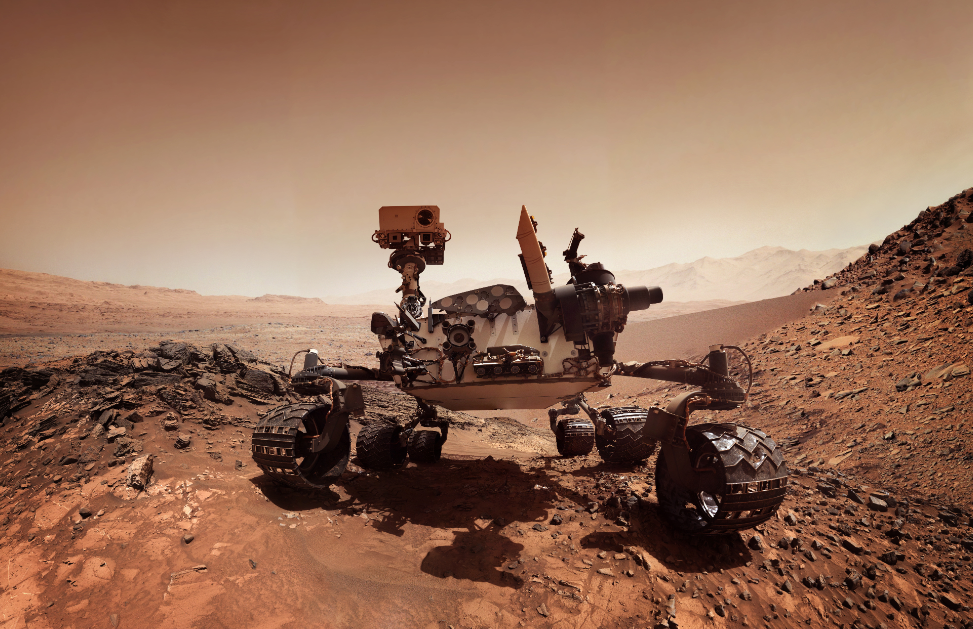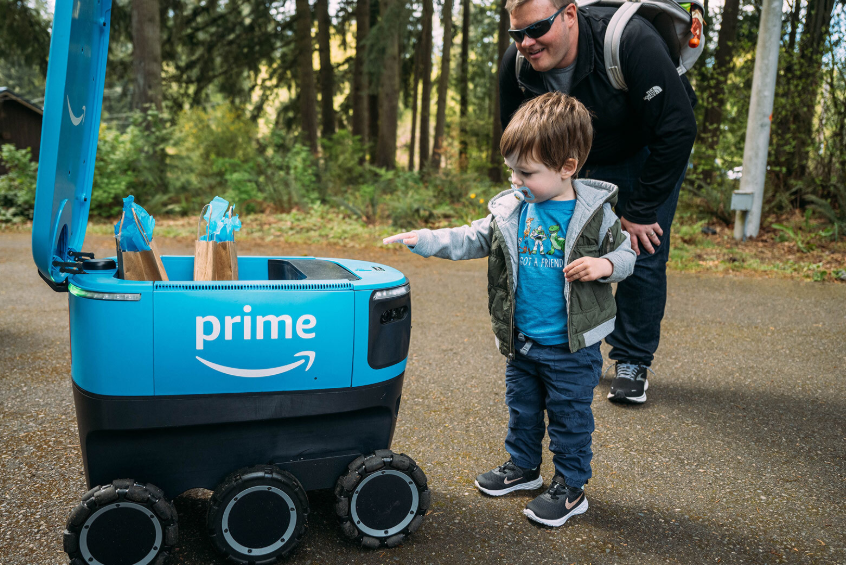
Forget sci-fi fantasies; the most incredible explorers reshaping our understanding of the cosmos, our planet's depths, and the most hostile environments aren't humans – they're sophisticated robots. What are the key Types of Exploration Robots driving this silent revolution, and how are these AI-powered machines specifically engineered to conquer realms no human could ever tread? This deep dive unlocks exactly that.
Why Environment Dictates the Types of Exploration Robots
Exploration robots aren't built in a generic mold. Their design is fundamentally dictated by the extreme and unforgiving environments they are engineered to penetrate. Understanding the brutal constraints of these worlds – crushing pressure, searing heat, absolute darkness, corrosive chemistry, or the vacuum of space – is key to appreciating the diverse and specialized Types of Exploration Robots scientists deploy. This extreme specialization shapes everything from materials and locomotion to power systems and sensor suites.
Conquering New Worlds: Planetary Exploration Rovers
These are perhaps the most iconic Types of Exploration Robots. Designed for the harsh realities of other celestial bodies, they must withstand temperature extremes, abrasive dust (regolith), radiation, low gravity, and operate with high autonomy due to communication delays with Earth.
Wheeled Rovers (e.g., NASA Curiosity & Perseverance)
Utilize robust, often rocker-bogie suspension systems for unparalleled terrain adaptability. Equipped with scientific instruments (cameras, spectrometers, drills), AI for autonomous navigation (AutoNav), and radioisotope thermoelectric generators (RTGs) for long-term power on Mars.
Future Concepts: Hopping, Flying & Hybrid Rovers
Ingenuity Mars Helicopter proved aerial scouting. Future robots might hop (using compressed gas/springs) on low-gravity asteroids or moons, combine wheels with rotors for cliffs, or use drills for sub-surface ice exploration on Europa/Enceladus. Autonomy and power management remain critical challenges.
To truly grasp why these machines revolutionize discovery, explore Uncharted Realms: What is an Exploration Robot & Why They're Revolutionizing Discovery.
Delving Deep: Subterranean & Cave Exploration Robots
Venturing into Earth's subsurface or natural cave systems presents unique challenges: zero GPS, complete darkness, confined spaces, complex 3D topography, unstable surfaces, and often water. Robots here prioritize mapping, navigation, and sensor resilience.
Tracked & Legged Robots
Tracked platforms offer stability on uneven, muddy cave floors. Legged robots (quadrupeds like ANYmal, hexapods) mimic biological explorers, offering incredible dexterity for climbing rocks, navigating rubble piles, and crossing gaps impossible for wheels. LiDAR and thermal cameras are essential.
Specialized: Vertical Shaft Robots & Swarms
Robots designed to rappel down sheer cave walls or mine shafts using ropes/cables. Micro-robotic swarms are being researched for exploration of vast, complex networks, offering redundancy and distributed mapping capabilities where individual units might fail.
Plumbing the Depths: Ocean Exploration Robots
The ocean depths represent the largest unexplored region on Earth, demanding robots that conquer immense pressure, cold, corrosive saltwater, and total darkness. Navigation without GPS and long endurance are paramount.
Remotely Operated Vehicles (ROVs)
Tethered workhorses connected by an umbilical cable to a surface ship. The cable provides power and real-time data/video transmission, allowing precise manipulation via robotic arms (sampling, repair). Vital for deep-sea research, oil/gas, and archaeology (e.g., surveying Titanic).
Autonomous Underwater Vehicles (AUVs)
Untethered robots pre-programmed for missions. They map large swathes of the seabed using sonar, collect water samples, and use inertial navigation systems combined with periodic fixes from acoustic beacons or surfacing for GPS. Crucial for large-scale oceanographic surveys and search operations.
Hybrid ROV/AUVs & Gliders
Emerging systems switch between tethered and autonomous modes. Underwater gliders are ultra-long endurance AUVs using buoyancy changes for propulsion, 'gliding' across oceans for months, collecting vital climate and current data.
Scouting the Skies: Atmospheric Exploration Robots
Exploring Earth's atmosphere or those of other planets requires lightweight, efficient platforms capable of flight, often in challenging winds and weather.
High-Altitude Long-Endurance (HALE) Drones & Balloons
Solar-powered drones operating in the stratosphere for months, performing atmospheric science, communication relays, or surveillance. Large scientific balloons carry instrument packages to extreme altitudes for cosmic ray detection or atmospheric composition studies.
Planetary Atmospheric Flyers
Ingenuity paved the way for aerial scouts on Mars. Future missions envision larger rotorcraft (e.g., Dragonfly to Titan) or potentially fixed-wing aircraft for Venus or gas giants, designed to survive exotic atmospheric compositions, winds, and temperatures.
See these diverse robot explorers in action: Unbelievable Exploration Robots Examples Rewriting Earth & Cosmic Discovery.
The Cutting Edge: AI, Autonomy & the Future of Exploration Robots
The common thread weaving through all Types of Exploration Robots is increasing intelligence and autonomy. Future explorers will feature:
Enhanced AI Perception: Better real-time interpretation of sensor data (vision, LiDAR, sonar) to identify hazards, navigate complex terrain, and spot scientifically interesting targets without constant human input.
Collaborative Autonomy: Teams of robots (rovers, drones, orbiters) working together, sharing data, and coordinating tasks.
Onboard Decision Making: Moving beyond simple navigation to making complex scientific decisions during missions (e.g., "This rock looks promising, drill it now").
Self-Preservation & Learning: Robots learning from mistakes, adapting strategies on the fly, and prioritizing their safety to complete missions.
This leap in autonomy is crucial for exploring distant worlds like Europa's ocean or navigating subterranean lava tubes on Mars, where lightspeed delays make real-time control impossible.
FAQs: Decoding the Types of Exploration Robots
What's the MAIN difference between Exploration Robots and Industrial Robots?
The core difference is the environment and task uncertainty. Industrial robots operate in controlled, predictable factory settings for repetitive tasks (e.g., welding, assembly). Exploration robots are designed for unknown, unstructured, and extreme environments (deep sea, space, caves, disaster zones). They must be robust, adaptable, equipped with advanced sensors, and increasingly autonomous to handle the unexpected, prioritize safety, and achieve mission goals without direct human oversight for extended periods.
Can one type of Exploration Robot function in multiple environments?
Generally, no. Environments pose radically different, often contradictory, physical challenges. A planetary rover designed for Mars' low-pressure vacuum and dust would fail catastrophically in the ocean's crushing pressure. Conversely, an ROV built for deep-sea pressure would be far too heavy and bulky for spaceflight or cave exploration. Specialization is key due to the harsh constraints. However, core technologies like AI, certain sensors, and communication protocols can be adapted across domains. Some terrestrial robots (e.g., tracked platforms) might function in mines and caves with adaptations.
How do Exploration Robots navigate without GPS or maps?
These robots rely on sophisticated techniques known as SLAM (Simultaneous Localization and Mapping):
Sensors: Use LiDAR, cameras, sonar, or radar to continuously scan the surroundings.
Dead Reckoning: Track movement from a known starting point using wheel encoders, inertial measurement units (IMUs - accelerometers & gyroscopes).
Feature Matching: Identify and track unique environmental features across sequential sensor readings.
AI Processing: Powerful onboard computers run complex algorithms in real-time to correlate sensor data, update the robot's estimated position, and build/refine a map of the unknown environment as it moves. Planetary rovers also use sun sensors and star trackers.
What role does AI play specifically in different Types of Exploration Robots?
AI is indispensable across the board, but its focus varies:
Planetary Rovers: Autonomous navigation (path planning, obstacle avoidance), science target selection, automated drill operations, fault detection/recovery.
Cave/Subterranean: Real-time 3D mapping, obstacle classification (rock, hole, wall), route planning in complex 3D structures, handling communication blackouts.
AUVs/ROVs: Real-time sonar image interpretation, automated survey pattern execution, collision avoidance in low visibility.
Atmospheric Drones: Autonomous flight control in dynamic winds, mission re-planning based on weather, sensor data analysis.
Fundamentally, AI enables these robots to perceive, reason, and act effectively in unpredictable environments far from human controllers.
From the frozen deserts of Mars to the crushing abyss of the Mariana Trench and the hidden labyrinths beneath our feet, the diverse Types of Exploration Robots – planetary rovers, subterranean crawlers, deep-sea divers, and atmospheric scouts – represent the cutting edge of our insatiable curiosity. Powered by increasingly sophisticated AI and tailored for the unique brutality of their target environments, these robots are no longer tools but active explorers, extending our senses and capabilities into the unknown. As autonomy and intelligence surge, the next decade promises robotic explorers venturing further, revealing more, and fundamentally reshaping our understanding of the universe and our place within it.







